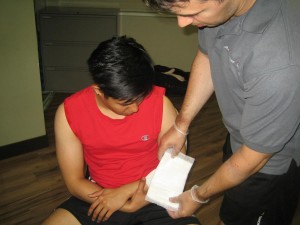Parsnip rash is also called phytophotodermatitis which is a skin condition caused by direct contact with some plants such as parsnip and wild parsnips or giant hogweed from which the condition got its name. Parsnips contain compounds which cause skin irritation and make the skin sensitive to sunlight that can result to severe burning. The sap of parsnip can cause severe burns and blisters on the arms and legs or the area of the body that came in contact with it. The sap from broken leaves and stem contains the chemical psoralen.
[youtube url=”https://www.youtube.com/watch?v=VyGCt2KuQME”]When it comes in contact with the skin and exposed to sunlight, it will cause severe irritation of the skin, blisters, pigmentation and burns for a long period of time.
Wild parsnip rash symptoms

When the toxins found in the sap is absorbed by the skin and exposed to the ultraviolet rays of the sun, the symptoms will start to develop. The affected area of the skin becomes red and painful and looks similar to sunburn. Parsnip rash develops in streaks when the broken leaf or stem will rub against the skin.
The symptoms usually happen within one or two days after the exposure. Small fluid-filled blisters will develop after exposure which can be painful and itchy. The rash is usually seen on the legs, arms, face and torso. When the blisters rupture, the skin will start to heal, but sometimes the dark pigmentation that is left after healing will remain for years.
Treatment and home remedies of wild parsnip rash
- Avoid exposing the affected area to sunlight. Make sure that it is protect it with clothing, gloves and footwear.
- Stay away from the sun and wash the affected area immediately by flushing the skin with plenty of water and avoid rubbing the skin. Use soap on the skin in order to remove any leftover residue. Avoid rubbing the area with a washcloth since it will only embed the scorching chemicals deep into the skin.
- You can utilize cold water to flush out the excess chemicals.
- Cover the affected area using a cool and damp cloth and avoid rubbing and scrubbing the area since it can make the condition worse.
- If there is formation of blisters, keep the area covered in order to prevent the rupture of blisters. It will help protect the injured area while in the process of healing and prevent infections.
- Apply a prescribed steroid cream if the rash is severe.
- If there are open sores, clean the area using soap and cool water, then apply an antibiotic ointment and cover using a sterile bandage in order to avoid contamination. Change bandages at least twice every day to maintain dryness and cleanliness.
- If the blisters become too large and weep rapidly after exposure, add Domeboro powder to the ice compress since it helps dry the blisters and provide relief from pain.
